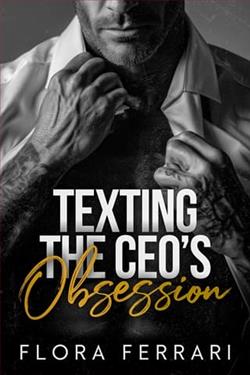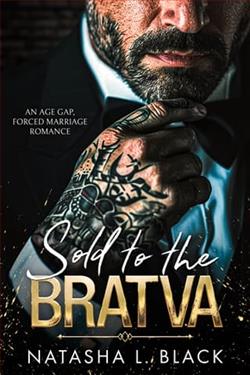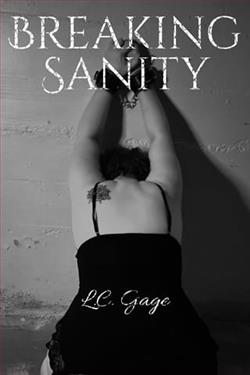Page 10 of Masked Intentions in Pelican Point
But the mask itself pulses brighter, and I realize with growing horror that breaking the connection hasn't dispersed the accumulated energy—it's concentrated it.
All of it is now focused on me.
I feel the ancient presence pressing against my mind, testing my defenses, weighing my worth. The voice comes again, clearer now: "Blood remembers. Will you stand guard?"
My hands shake as I close the case, but I force my voice steady. "Yes."
The mask's glow fades to normal, and the ballroom returns to its previous state. Guests look around in confusion, paramedics rush to help those who collapsed, and Ryan's voice rises above the chaos, reassuring everyone that all is well.
But I know it isn't well. Something fundamental has changed. The mask has chosen me, and I've accepted a responsibility I don't fully understand. But something feels wrong about the spiritual atmosphere tonight—manufactured rather than organic, as if someone is trying to force connections that should develop naturally.
Nolan appears at my side, his face pale. "What did you see?"
"Warriors. Water. Death." I meet his eyes. "And you, somehow. You were there too."
His expression darkens. "We need to talk. Privately."
The rest of the evening passes in a blur of damage control. Guests are reassured, statements are taken, and explanations are crafted that have nothing to do with supernatural possession. By the time the last visitor departs or retires to their rooms, I'm exhausted.
But the night isn't finished with us yet.
CHAPTER 4
NOLAN
The archives beneath Saltmoor House smell of old leather and secrets. I descend the narrow stone steps, following the beam of my flashlight through corridors that predate the mansion above. Ryan gave me access to the family's private collection—centuries of documents, maps, and artifacts that most scholars would kill to examine.
But I'm not looking for academic glory. I'm hunting for truth.
The beam catches the spine I've been seeking:Relación del Naufragio de la Reina de Oro, 1697.Account of the Wreck of the Queen of Gold. The leather binding cracks as I open it, releasing the scent of vanilla and decay. Father Miguel Santos was the ship's chaplain, one of only three survivors pulled from the Florida shallows.
I spread the yellowed pages across the reading desk, my pulse quickening as I find the passage I remember:
El día quinto después del naufragio, we found a strange object buried in sand beneath el cacique's bones. Golden mask, worked with symbols no Christian eye should witness. Diego insisted we take it—'treasure from heathens,' he called it. I warned against disturbing the dead, but greed makes devils of good men.
That night, Diego woke screaming. Said the mask spoke to him in dreams, voices of drowned warriors demanding blood-price for their stolen guardian. Told him of great waters rising, of souls trapped between sea and sky, hungry for release.
By morning, Diego's hair had gone white. By evening, he walked into the surf and never returned. The mask sat in our camp, innocent as carved wood, but I swear I heard it whispering when the tide came in.
My hands tremble as I photograph each page. The account continues for weeks—crew members succumbing to madness, speaking in languages none of them knew, drawing symbols that matched no European script. Three more men vanished into the ocean before the survivors buried the mask and fled inland.
I pull out my notebook, comparing Santos's sketches to my own drawings from the display case upstairs. The symbols match perfectly, down to the smallest detail. But there's something else—additional markings that aren't visible on the current mask, as if they've been deliberately obscured.
A leather portfolio catches my eye:Murphy Family Acquisitions, 1890-1920. Inside, a photograph makes my blood freeze. The same mask, displayed in what looks like a prohibition-era speakeasy. The caption reads:Collected from estate of Silas Cord, deceased under mysterious circumstances, 1920.
I flip through more documents. A 1924 police report describes Cord's death: found on Pelican Point beach at low tide, face frozen in terror, no signs of violence. Witnesses claimed he'd been wearing the mask at a party the night before, boasting about its power to "command the spirits of the deep."
1945: A collector named Harrison Webb displayed the mask at a gallery opening. Three guests suffered simultaneous strokes. Webb himself was found in his study, pen still in hand, having written the same phrase over and over:"Miskito cahochee"—the water remembers.
1967: Another collector, this time in Miami. The mask was stolen during a hurricane, recovered from a flooded basement where the thief had drowned despite the water being only three feet deep. And a note, unsigned:The mask has returned to its original resting place. I pray to God it never sees the light of day again.
Each incident follows the same pattern: public display, escalating supernatural phenomena, death by drowning or madness. The mask always survives, always finds its way to the next collector, as if it chooses them.
My phone buzzes—a text from Allison asking where I am. I almost ignore it, but then notice the time. Three hours have passed in what feels like minutes. The archive feels colder, my flashlight beam dimmer.
As I gather the documents, a page slips from the Santos account—one I hadn't noticed before. The chaplain's final entry, written in shaky script:
I have sinned greatly. We did not simply steal treasure from dead heathens. The shamans told us before they died—the mask was their prison, their way of binding the war spirits who refused to pass on. Calusa warriors who died in battle, too proud or angry to join their ancestors.















